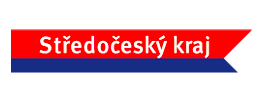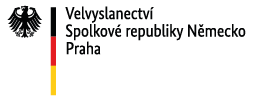Jakub Jan Ryba (1765–1815)
Jakub Jan Ryba was born on 26 October 1765 in Přeštice, western Bohemia. Growing up in a cantor’s family, he was naturally led to the teaching profession and to music. His studies at the Piarist grammar school in Prague opened the way to deeper musical cultivation and a spiritual dimension in his work.
In 1788, he became a teacher and organist in Rožmitál pod Třemšínem, where he remained until his death. He was a strong advocate of Enlightenment reforms in education, promoting instruction in the Czech language. His pedagogical work was extraordinary, as was his musical output – he composed over 1,400 pieces, mostly of a sacred character.
His most famous work, the Czech Christmas Mass “Hej mistře” (1796), transforms the liturgical text into Czech and lyrically depicts the simple rural world with a gentle emphasis on popular piety. To this day, it remains one of the most enduring symbols of Czech Christmas.
Ryba was a deeply sensitive man who struggled with official misunderstandings and existential hardships. He tragically ended his life on 8 April 1815.
Antonín Dvořák (1841–1904)
Antonín Dvořák was born on 8 September 1841 in Nelahozeves near Prague. He came from a large family of a village butcher, but his extraordinary musical talent led him early on to study at the Prague Organ School. After graduating, he worked as a violist in the orchestra of the Provisional Theatre, where he came into contact with Bedřich Smetana and Prague’s cultural circles.
Dvořák’s composing career fully developed in the 1870s, when he repeatedly received the Austrian State Scholarship. Thanks to the recommendation of Johannes Brahms, his music subsequently gained international recognition, particularly through the Slavonic Dances (1878), which naturally merged classical music with Czech folk motifs.
From 1892 to 1895, he served as director of the National Conservatory of Music in New York. During his American stay, he composed his most famous symphony, From the New World, which remains one of the jewels of the world repertoire. However, Dvořák remained deeply attached to the Czech countryside – his favorite refuge was Vysoká near Příbram, where he spent long summer months and where his most important opera, Rusalka, was created. He died in Prague on 1 May 1904.
Count Václav Kounic (1848–1913)
Václav Kounic was born on 26 September 1848 in Vienna into an ancient noble family whose members had historically held prominent positions in diplomacy and state administration. He studied law in Vienna and Prague and later actively engaged in political life.
As a member of the Imperial Council, he supported Czech national emancipation and education. His personal life was closely connected with the cultural sphere – he married the actress Josefina Čermáková, sister of Antonín Dvořák’s wife.
His most significant act of patronage was the founding of the Kounic Halls of Residence in Brno in 1907, providing accommodation for Czech university students. Later, during the Nazi occupation, the halls became a symbol of resistance and a place of suffering and executions. Václav Kounic died on 25 February 1913 in Uherský Brod.
Church of the Assumption of the Virgin Mary in Třebsko
The parish Church of the Assumption of the Virgin Mary, perched on a hill at the southern edge of Třebsko, was first mentioned between 1352 and 1369, with the earliest specific record dating to 1367. Originally Romanesque, it was later Gothicized. In the second half of the 17th century, the church underwent a Baroque reconstruction, resulting in a single-nave building with a polygonal presbytery, a northern sacristy, and a western tower.
On 3 July 1953, the church was struck by lightning and burned down. Restoration was completed in 1964, and the church was consecrated again. New bells, funded through donations, were blessed in 1971.
This modest church played a significant role in the personal lives and creative works of several key figures of Czech music and culture.
On 26 July 1790, the renowned composer Jakub Jan Ryba married Anna Laglerová, daughter of the Rožmitál burgrave, in this church. At that time, the local parish priest was Filip Vaníček, a close friend of Ryba. Due to strained relations with the priest Kašpar Zachar in Rožmitál, Ryba chose Třebsko for his wedding.
In 1877, Count Václav Robert Kounic, a leading Czech nobleman and patron of the arts, married actress Josefina Čermáková here. After the wedding, Kounic bought the Vysoká estate near Příbram and had a Neo-Renaissance manor built as a gift for his wife. This residence became a meeting place for many significant cultural and political figures. Poet Václav Sládek visited several times, and Antonín Dvořák, a frequent guest, even rebuilt a house in the village, later named Villa Rusalka after his death.
After Josefina’s death, a requiem Mass was held for her on 30 May 1895 in the Třebsko church.
Antonín Dvořák had a deep personal connection with the Church of the Assumption of the Virgin Mary. During his stays in Vysoká between 1884 and 1904, he regularly attended services and often played the organ. In 1894, after returning from the USA, he donated new organs to the church from the proceeds of his American concerts. Sadly, these organs were destroyed during the fire caused by the lightning strike in 1953. The only surviving memories of Dvořák’s visits are the record of the organ donation and the pew where he used to sit while playing.
Following the destruction of Dvořák’s organs, a precious instrument dating from the turn of the 17th and 18th centuries, originally from the Church of St. Anne in Kostelec nad Orlicí, was donated to Třebsko as a replacement.
The devastating fire in 1953 during the tenure of parish priest Josef Novotný irreversibly damaged the historical appearance of the church but also marked the beginning of a new chapter. Flames destroyed the shingle roof of the main tower, the smaller bell towers, and the church’s main roof. Inside, the wooden ceiling was completely lost. Of the interior furnishings, only part was saved – the two side altars, the wooden structure of the main altar, the pulpit, and the organs donated by Dvořák were all consumed by the fire.
The church’s reconstruction took place between 1953 and 1958. The original ceilings were replaced by new concrete vaults. Gradual re-furnishing of the interior followed. Significant efforts were made to save the altar painting The Assumption of the Virgin Mary by Jan Mos, a painter and photographer from Příbram, created in 1880, along with the preservation of the original Stations of the Cross.
Today’s three pseudo-Baroque altars date from 1904 and were brought from a decommissioned sanctuary in Prague. A major milestone for the church community came in 1971, when, under the guidance of parish priest Rudolf Tichý, three new bells were purchased thanks to donations from Třebsko’s inhabitants and neighboring villages. Two original bells had been lost to wartime requisitions.
The largest new bell, weighing 340 kg and tuned to B1, is dedicated to Our Lady of Svatá Hora and bears her relief along with the inscription:
“Dedicated by the parish of Třebsko to the Blessed Virgin Mary, A.D. 1971.”
On the opposite side, another inscription commemorates Dvořák’s legacy:
“In memory of Antonín Dvořák, who praised God with music in this church.”
The second bell, tuned to C#2 and weighing 220 kg, is dedicated to St. Wenceslas. The smallest, weighing 150 kg and tuned to D#2, bears the name of St. Procopius. All three were solemnly blessed on 5 September 1971 by Bishop František Tomášek.
The blessing ceremony was accompanied by the publication of a six-page memorial leaflet entitled “In Memory of the Blessing of the Bells in Třebsko”, created without the prior approval of the district church authority. Its authors – Jindřich Václav Bezděka, Otto Bartoň, and artist Václav Mathauser – faced persecution from the authorities for their initiative.
To preserve the church and its historic organs for future generations, reconstruction work must begin now. Due to the high financial costs, the Roman Catholic Parish of Třebsko has launched a fundraising campaign. Contributions can be sent to account number 6584534379/0800.
This commemorative plaque was created in 2025 through the collaboration of the Roman Catholic Parish of Třebsko, the municipality of Třebsko, and Dvořák’s Příbram, organizer of the Antonín Dvořák Music Festival.
Special thanks for providing historical materials and textual documentation go to Dr. Věra Smolová, head of the State District Archive of Příbram, and Štěpán Svoboda, diocesan organologist of the Prague Archbishopric.



